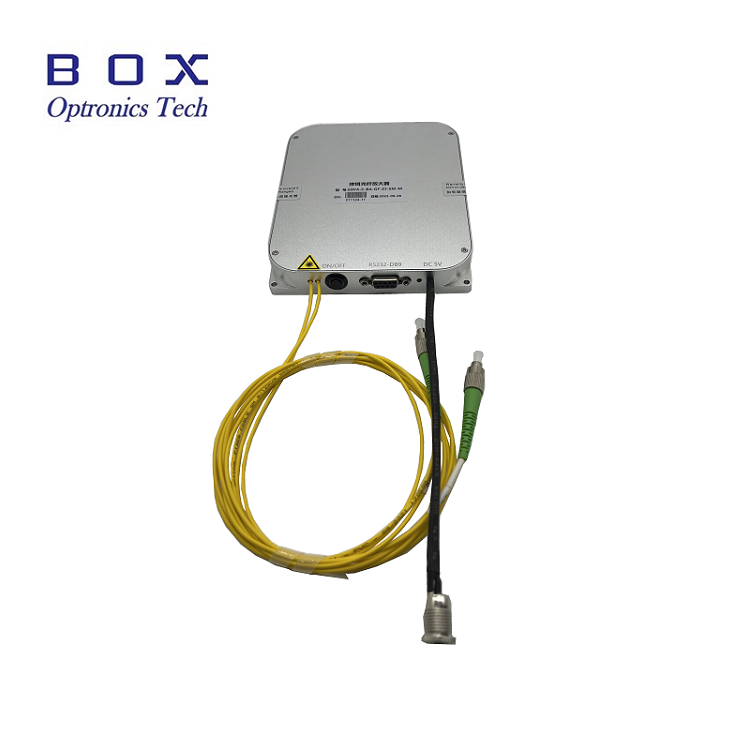Fiber Optic Modules: The Future of Fast, Reliable Communication
2025-03-12
In our increasingly digital world, the need for faster, more reliable internet and communication systems has never been greater. Whether you’re streaming 4K videos, attending video conferences, or transferring massive data files, fiber optic technology plays a pivotal role in ensuring everything runs smoothly. At the heart of this technology are fiber optic modules—the small yet powerful components that enable high-speed data transmission. Let’s explore how these modules are transforming the way we connect and communicate.
What Are Fiber Optic Modules?
Fiber optic modules are electronic devices that enable the transmission and reception of data over fiber optic cables. They are integral parts of fiber optic communication systems, allowing for the conversion of electrical signals into optical signals and vice versa. These modules are used in a variety of applications, from internet services to telecommunications, data centers, and enterprise networks.
How Do Fiber Optic Modules Work?
Fiber optic modules are equipped with optical transceivers that use light to transmit data across fiber optic cables. When an electrical signal is received, the module converts it into light using a laser or LED. This light signal travels through the fiber optic cable and is received at the other end, where the process is reversed—converting the light signal back into an electrical signal for further processing. This conversion process ensures fast and efficient transmission of data over long distances without signal degradation.
Why Are Fiber Optic Modules So Important?
1. Unmatched Speed and Bandwidth
Fiber optic modules enable high-speed data transmission with virtually no latency. With the ability to support gigabit speeds and beyond, fiber optics are the ideal solution for applications that require large amounts of data to be transferred quickly, such as cloud computing, video streaming, and high-frequency trading.
2. Long-Distance Communication
Unlike traditional copper cables, fiber optic cables can transmit data over long distances without significant signal loss or degradation. This makes them perfect for connecting data centers, enterprise networks, and even entire cities with reliable, high-performance connectivity.
3. Improved Reliability
Fiber optic technology is immune to electromagnetic interference (EMI), which means that the data transmitted remains clean and stable, even in environments with high levels of electrical noise. This leads to fewer connection drops and higher quality communication.
4. Security
Fiber optic cables are incredibly difficult to tap into compared to traditional copper cables. The light signals used for transmission are harder to intercept, providing a higher level of security for sensitive data. This makes fiber optic communication an excellent choice for applications that require data privacy and security.
5. Energy Efficiency
Fiber optic modules consume less energy compared to copper-based alternatives, making them a more sustainable option for green communications. With lower power consumption, these modules help reduce the overall carbon footprint of communication networks.
Applications of Fiber Optic Modules
- Telecommunications: Fiber optic modules enable fast and reliable communication across long distances, essential for internet services, mobile networks, and television broadcasting.
- Data Centers: Fiber optic modules are crucial in connecting servers and storage devices within data centers, ensuring rapid and uninterrupted data flow between components.
- Enterprise Networks: Businesses rely on fiber optic modules to maintain high-performance networks that support activities like cloud storage, video conferencing, and real-time collaboration.
- Medical Imaging: Fiber optic modules play a role in advanced medical imaging equipment by enabling high-speed transmission of large files such as high-resolution MRI and CT scan images.
- Security Systems: Fiber optic modules are used in surveillance systems to transmit data from cameras and sensors to central monitoring stations, offering high-quality video feeds and low latency.
Choosing the Right Fiber Optic Module
When selecting a fiber optic module for your needs, there are a few factors to consider:
- Compatibility: Ensure the module is compatible with the type of fiber optic cable and network equipment you’re using.
- Transmission Distance: Choose a module that supports the required distance for your network or communication setup.
- Speed and Bandwidth: Different modules offer varying levels of speed and bandwidth. Select a module that can handle the data load of your application.
- Form Factor: Fiber optic modules come in different sizes and shapes, such as SFP, SFP+, and QSFP. Choose the form factor that fits your system’s design.
The Future of Fiber Optic Modules
As the demand for faster, more reliable communication continues to grow, fiber optic modules will evolve to meet the needs of emerging technologies. 5G networks, Internet of Things (IoT), and artificial intelligence (AI) will all benefit from the speed and reliability of fiber optic solutions. Expect to see continued advancements in modular designs, lower costs, and higher performance as the industry evolves.
Final Thoughts
Fiber optic modules are at the core of modern communication systems, enabling the fast, reliable, and secure transfer of data across the globe. As we move into an increasingly connected future, the importance of these small but powerful devices will only continue to grow. Whether you’re upgrading your network, building a data center, or connecting remote locations, fiber optic modules are the key to achieving the performance and reliability needed for today’s demanding applications.
Ready to take your network to the next level? Fiber optic modules are the future of fast, secure communication—don’t get left behind.



